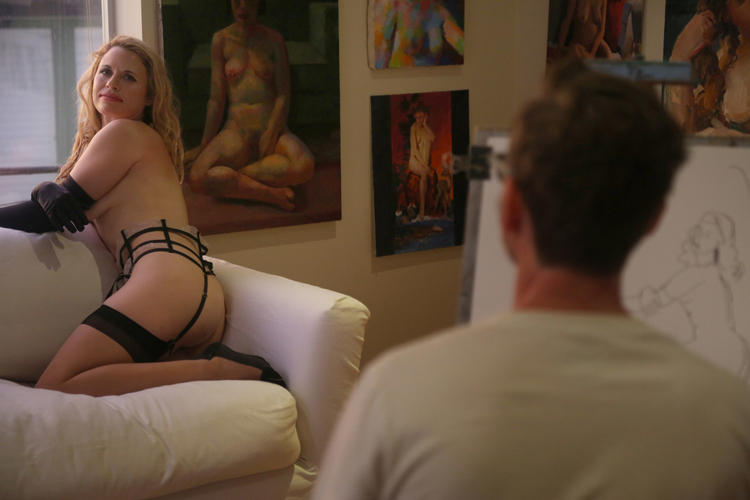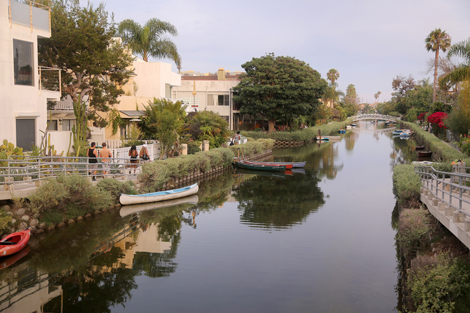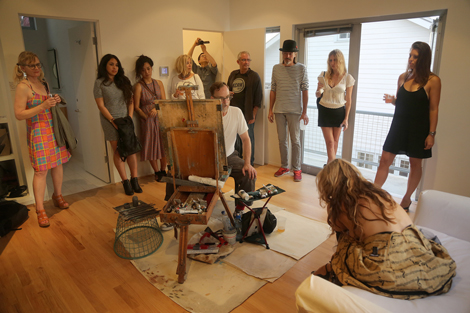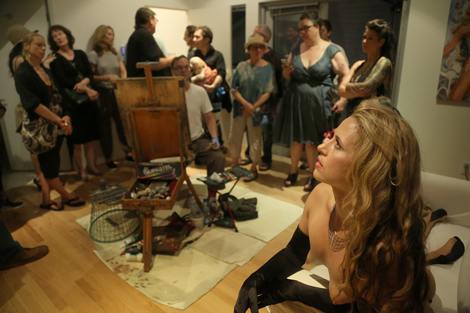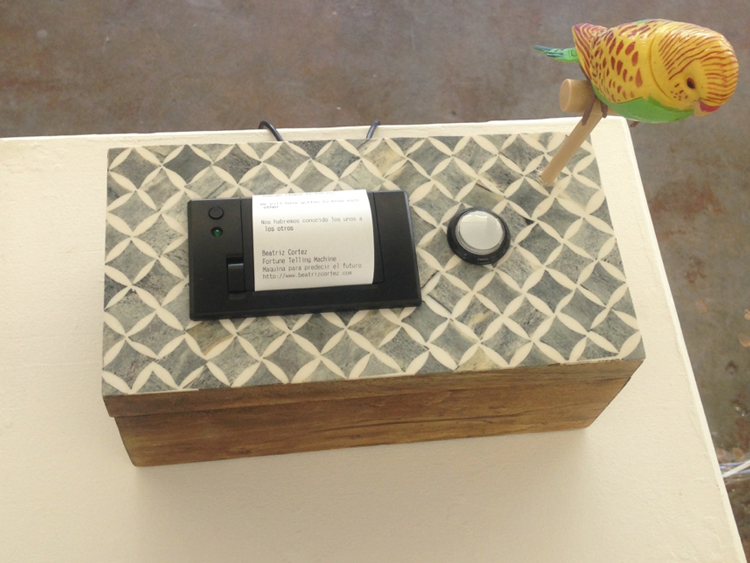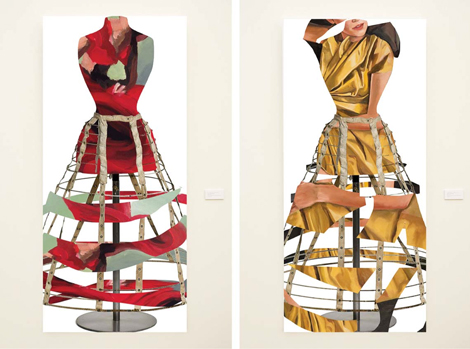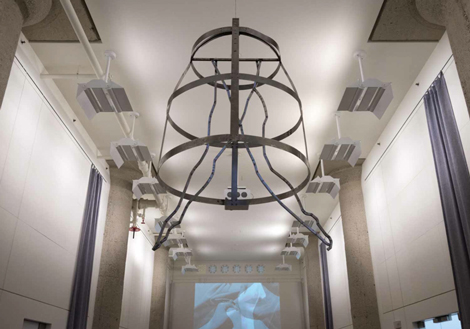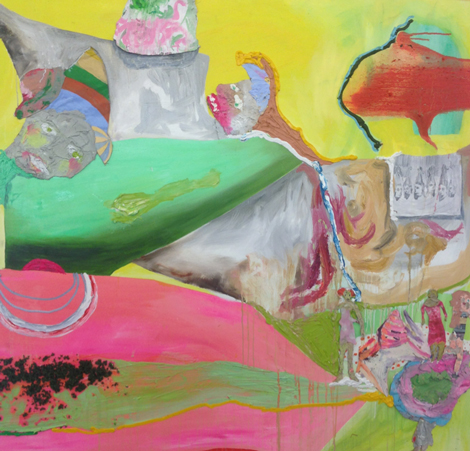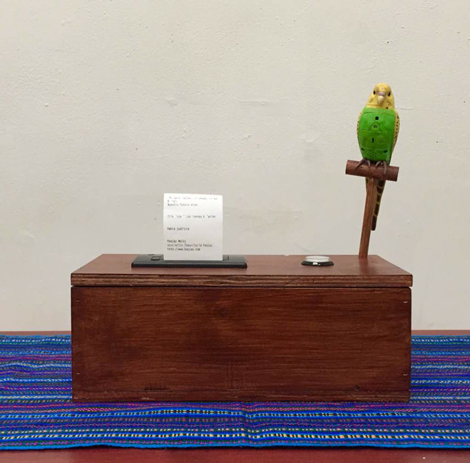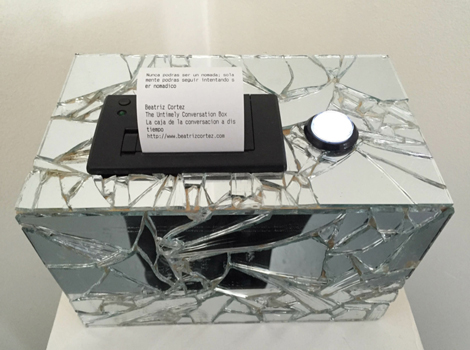Your cart is currently empty!
Byline: Frances Cocksedge
-

Live! Nude! Paint!
Last Sunday, instead of curling up to watch an episode of Orange is the New Black and calling it a night, I headed to Venice Beach where art collectors Mike and Diane Silver had opened their gorgeous canal-front home for “Nude Survey Two,” where the established Plein Air painter Alex Schaefer would be exhibiting a new series of works as well as painting from two female models on the spot. Celebrating Eric Minh Swenson’s second curatorial effort, the event consisted of what may perhaps be a first in art history: Live nude painting in an actual nude room.

View from the Silver manse. The classic all-white beach house—like many redone shack houses in small Venice lots—is at least four stories high, with narrow hallways that, at this particular time, were filled with smartly dressed individuals and booming with party chatter. When I first entered, I had no idea where the actual performance was, though the lively energy of the place was invigorating. It wasn’t until I reached what I believe to be the third floor that I noticed a crowd spilling out of a room just one more stairway above. Alex Schaefer sat at an aisle in the center of this tiny room that faced a white couch upon which lay a pretty blonde wearing nothing but a garter belt and stockings. Poking my head through the tightly knit crowd of observers, I could see the beginnings of an impressionistic painting of the woman’s figure on sheet paper, which Schaefer was expanding upon rapidly. The walls of the room were covered from ceiling to floor in the Silvers’ impressive and diverse collection of female nude paintings (giving the area its name “the nude room.”) A pile of Schaefer’s figure drawings—ranging from highly representational portraits to quick impressions of male and female bodies—were set out in the corner of the room for guests to flip through, all of which were for sale.

Schaefer and guests in nude room. 
Schaefer taking to on-break model while guests observe. I was pleasantly surprised to discover that the entire exchange was completely nonchalant: Schaefer casually sipped beer, joked around with the observers and models, and even told the group he needed to take a break to check a text. Despite the fact that this room was filled to the brim with art-world figures, no one was taking it—or the artwork—too seriously; it was entirely convivial. After watching the artist paint his models for a few minutes, I noticed that this laidback manner matched his artistic style as well. He told the group that when he begins a painting, he simply piles a few colors onto the paper (or canvas, presumably) in mounds. “The more wrong I am, the better,” he tells the group, “you learn from fixing.” When he switches models, he simply turns the sheet of paper on its head and starts painting above his previous work. When individuals inquired about the prices of his sketches, he has them hold up the one they want and states a number—nothing I heard was over $200.

Model, Schaefer, and guests in nude room. Of all the openings and gallery events I have attended so far, this unique art-related affair was a great change of pace. All too often I find the atmosphere of these events plainly business oriented, and sometimes quite stern. Thus, it was refreshing to attend something so light-humored, accepting, and above all else, fun.
All photos by Eric Minh Swenson.
-

The Graduates
Last week I ventured to the Cooper Design Space in Downtown LA’s fashion district to see the “15 CalArts MFA Show.” It is a large inconspicuous building surrounded by cut-rate fabric stores typically used for designer showcases—a somewhat irregular location for an art exhibition. However the shift from fashion to fine art was well facilitated by a Kimberly Brooks installation on view in the lobby. Titled “Thread & Bone,” it explores the parallels between painting, fashion design and the industrious structure of the building itself through a series of collages, video and a huge steel hanging sculpture. The printed collages that line the walls of the lobby use photographs of figurative detail paintings by Brooks herself to create the fragmented contour of a gown, drawing a deliberate connection between painting and textile. It provided the perfect middle-step between the outside environment and the MFA show I was headed to see.

Kimberly Brooks, Red and Yellow Collages, 2015 
Kimberly Brooks, “Ephemerality of Manner”, 2015 Upon entering the gigantic exhibition space from tumbleweeds to Facebook profile collages—these MFA students have it all— at first my eye did not know what to focus on. Although a painting by Hannah Plotke caught my attention. A beautiful tension occurs between the artificial and natural through its dualities of neon-colored paint and muddy sand. The canvas is covered in a mixture of abstracted bright shapes and cartoon-like depictions of human faces and bodies.

Hannah Plotke, “The Guests Hardly Slept at all but Spent the Night Playing Practical Jokes on One Another”, 2015, oil on canvas, (detail) Another highlight is Tasha Bjelic’s “Bathroom Address,” which consists of three framed sheets of paper, the first labeled as Bill Clinton’s Address to the American People at the Kosovo Intervention, and the second two labeled as her own “bathroom” address in the same format. Both of these “addresses” are made up of two columns that list things under the label of “friend” and “enemy.” Clinton’s address appears to be entirely political, listing things like: defenseless people, Europe, and peace, under the friend column, and “Serbian forces:” brutality, etc., as enemies. Bjelic’s friend and enemy lists on the other hand are made up of more mundane, relatable qualities like: tingle from head to toe, make-up and bad breath. This work seems to touch upon the common disconnect political issues and everyday life because it is easier to connect with and feel emotions toward the trivial items listed in Bjelic’s address than Clinton’s.

Andre Daughtry, “Cathedral” still, 2015 Andre Daughtry’s video Cathedral is another notable work. It is made up of four different accounts, told through voiceover, while a camera follows an unidentified black male going up and down an escalator—the character changes with each account—of problematic situations for blacks in Los Angeles. These stories are interspaced with poignant shots of each respective character interacting with a monument in Downtown LA. My favorite of which was the character spinning around in graceful dance at the police station.

Beatriz Cortez, “The Fortune Teller Machine (Nomad World Edition)”, 2014 
Beatriz Cortez, “The Untimely Conversation Box (The Cosmos Edition)”, 2015 The showstopper for me was a series of four interactive receipt makers by Beatriz Cortez. Each machine has a button that when pushed releases a receipt bearing a message that the viewer is invited to tear off and read. Some of the messages read like fortune cookies: “Have a willingness not to be—resist the lure of identity.” While others simply say: “what’s up?” Though the machines are uniform in function and size, two look like kitschy vintage boxes with plastic parrots that animate with the button-push, one is covered in broken glass, and the last is completely transparent. I don’t know if there is any significance in the messages themselves or the nuances of each machine’s exterior, but I think it’s an innovative idea that successfully combines the common art themes of robots (or technology in general,) kitsch, and consumerism in a fresh, new way.
This CalArts MFA exhibition curated by Sarah Lehrer-Graiwer left me feeling curious and hopeful for the future careers of this eclectic and bold group of emerging artists. Many show a great deal of promise and I look forward to seeing their works out there (if they aren’t already!)
